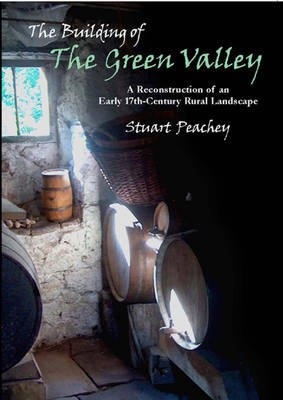Is there a living history enthusiast out there who has not wished they could have their own historical manor house, castle, farm, village, etc.? Stuart Peachey has a 17th century farm, and wrote a book about the experience. The Building of The Green Valley: A Reconstruction of an Early 17th Century Rural Landscape (By Stuart Peachey, 2006, Heritage Publications) is not a really polished book, but it is a pleasant read, and for all of us history junkies it like reading our fantasies come to fruition. Stuart Peachey has been reenacting since the late 1970s and not too long into his reenacting career came into a bit of a windfall and with a group of friends bought some land in Wales on which there was the ruins of a17th century farm.
They bought it in order to have a place to do living history and reenactments and to that end they set about restoring the land, buildings, gardens, and fields to how it looked in the 17th century. The book is mostly a chronicle of the work that went into restoring the farm (or farms, really) and a chronicle of those people who invested a large part of their lives into the farm. The later chapters are guides to the research, animals, plants and infrastructure that went into the project (should one wish to attempt something like this one's self.)
One of the things that I noticed about the book is that someone (possibly Peachy himself) kept very good track of every person that contributed labor to the project. The main section of the book chronicles from 1987 until 2003 when the farm was complete enough to be used as the site for a reality TV show. All the work that was done on the site was done by volunteers. Hundreds of volunteers over more than a decade, and sometimes it seems like Peachey names them all by name. This can get a little tedious, but it also illustrates the fact that "the valley" project was very much a community project. The is politics, and personalities, there is real life. But still the project moved forward.
And throughout the project not a single person profited monetarily from the restoration. Everyone was content with the fact that they were building up a really cool historical setting. All the events held on the site were done with the intention to educate and possibly further invest in the site. The whole thing was done with very little money but a ton of labor. And a ton of historical research.
There is not very much info in the book on life in the 17th century, that is not the point of the book. But the amount of work that went into researching the buildings, their uses, the types of plants and animals re-introduced to the valley, and the people who lived and worked there all comes through in the stories and pictures. The book left me wanting fairly badly to visit the valley, especially during a living history event, but even more (and more dangerously) it gave me faith that a project like theirs is achievable. With enough goodwill and sweat equity, it is possible to have your own living history farm.
Sharing a Strap Pattern
4 months ago


This years Living History at the Green Valley is Mon 27th June to Fri 1st July if you are in the area.
ReplyDeleteStuart
England 01275 463041
I wish I could make it, the swim is a little far for me. All the best during your Living History!
ReplyDeleteAlena